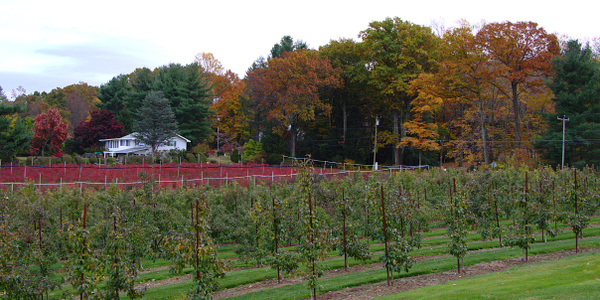When you’re looking at a property, how much time do you spend outside looking at the surroundings? What are the adjacent properties? How do they look? Are you near a major road? Are there commercial or other non-residential parcels near you? Is there a farm or undeveloped land abutting or near the property?
When we view homes with buyers we try to spend some time evaluating the adjoining and nearby spaces. This isn’t necessarily to figure out if they’re going to have good neighbors or not. It’s to understand if there is the potential for change to the landscape around them.

For example, a few months ago I was showing some clients property that abutted a farm. The listing agent took care to advertise that it was adjacent to the farm and used this as a selling feature because it was peaceful and scenic. But what if some day the farm isn’t a farm anymore? What if someday the farm land is sold? What does it become? Most likely residential usage, but that’s not always guaranteed. I pointed out to the buyers that the house we were looking at used to be part of the farm too, but at some point some of the farm land was sold to build this development. That could happen in the future and there could then be additional development that’s in the currently tranquil backyard.
We’ve seen some examples recently of local homeowners contesting development to open land that abuts or is near their residential developments. In West Hartford, residents are speaking out against the proposed sale of 9 acres of land by the American School for the Deaf (ASD) to a home builder. In this instance, people bought houses that backed to a non-residential use property. That non-residential use property has decided to change the use of their land. They would like to sell it to a developer. But what would have happened if ASD simply expanded on their own campus? What if they grew their school and built more buildings, parking lots or playing fields on their undeveloped property? The neighboring properties would have been impacted by that as well.
With a changing real estate landscape, we see these development conflicts come up all of the time. The West End of Hartford faced a similar development challenge in 2012 when the University of Hartford wanted to sell part of its campus to CREC for a new elementary school to be developed, which backed to residential development. I would expect a lot of back and forth between the Town of West Hartford and the University of Connecticut when UConn divests of its West Hartford campus in the upcoming months. What will become of that property, which is located in a residential area? How will that change the landscape for current property owners near the campus?
The point I’m trying to make here, and that we make when we’re showing buyers homes, is that what you see near here today may not be the same down the line. Some properties face more opportunities of a changing landscape than others. The change in landscape around you may actually help your property values. They aren’t always a negative. Think of what Blue Back Square has done to help West Hartford Center- there was a positive impact on residential property values in the Center because of it. That being said, it’s important to be aware of the possibility of change because not all change will be viewed as positive. Don’t just focus on the interior of a property, spend some time thinking about the outside and its surroundings.